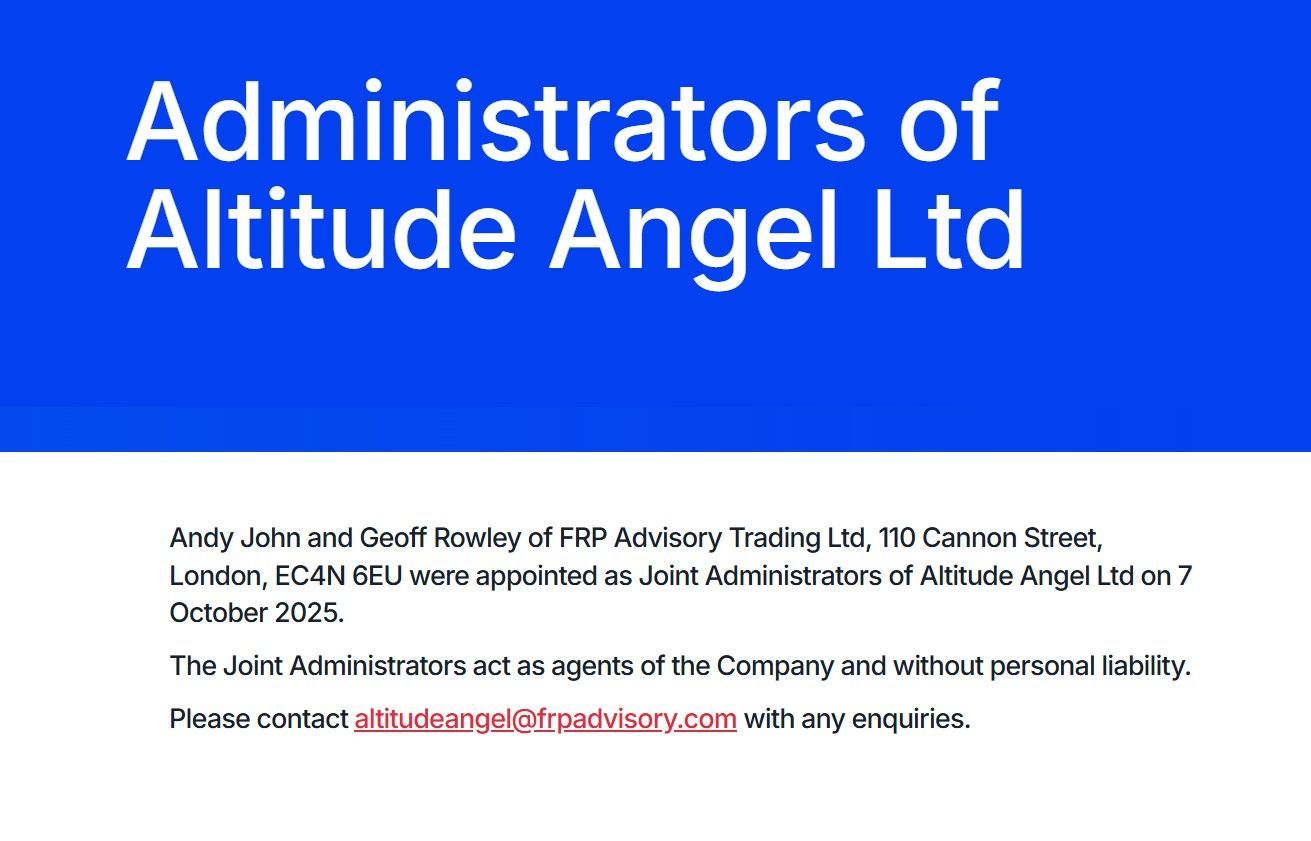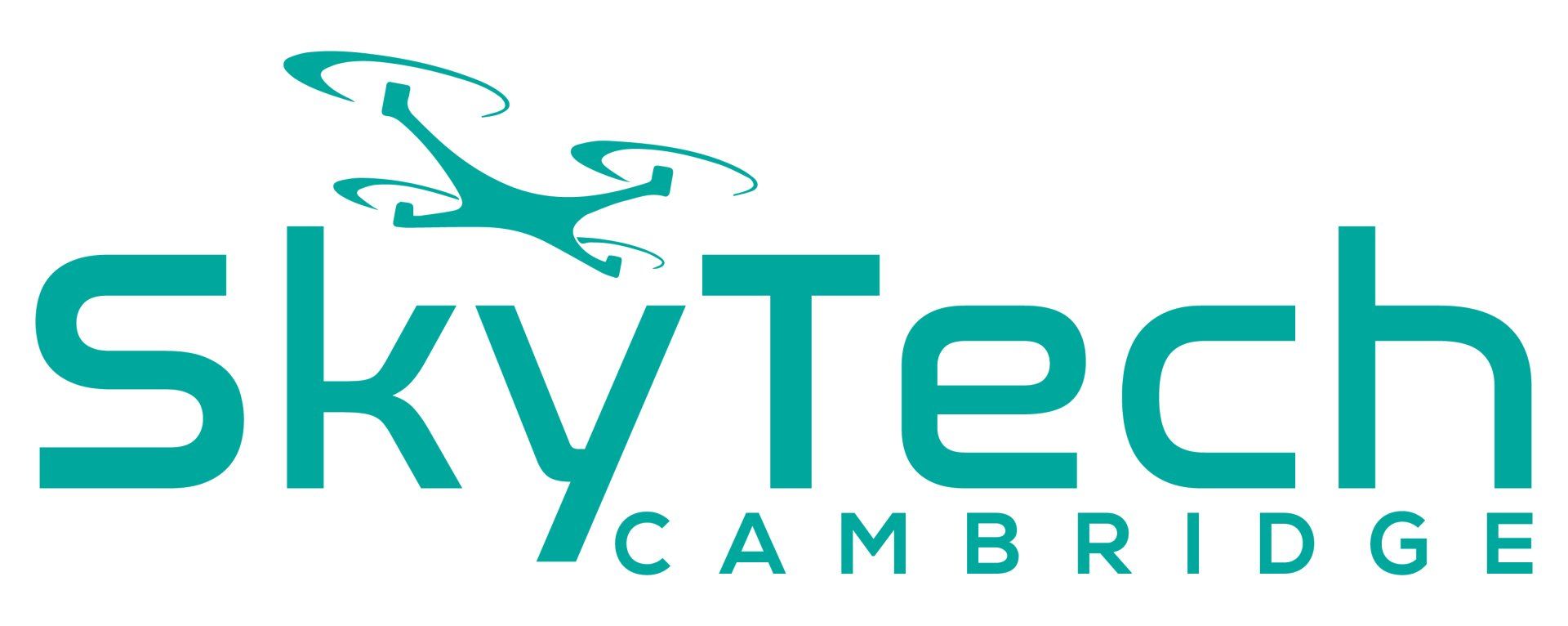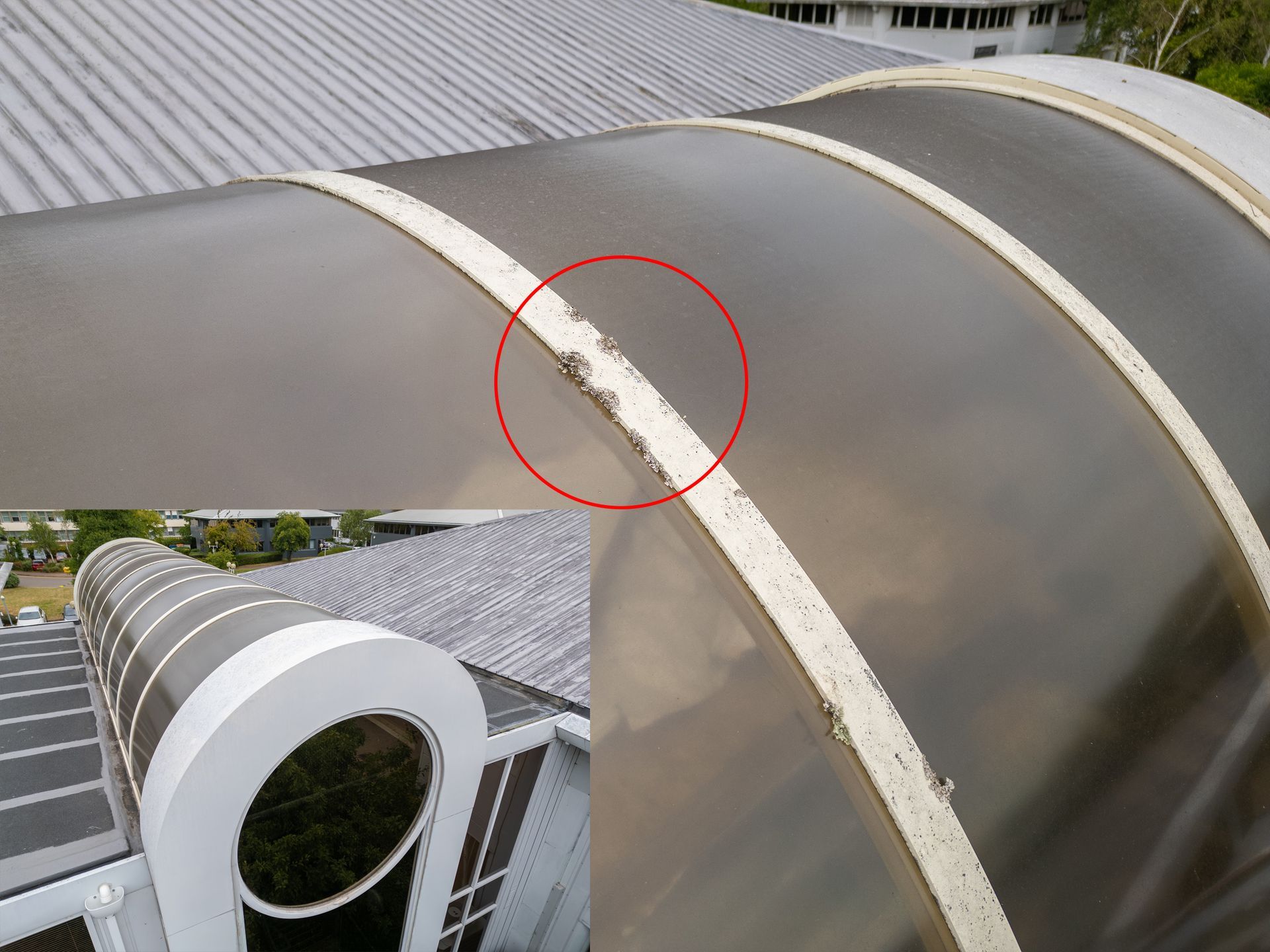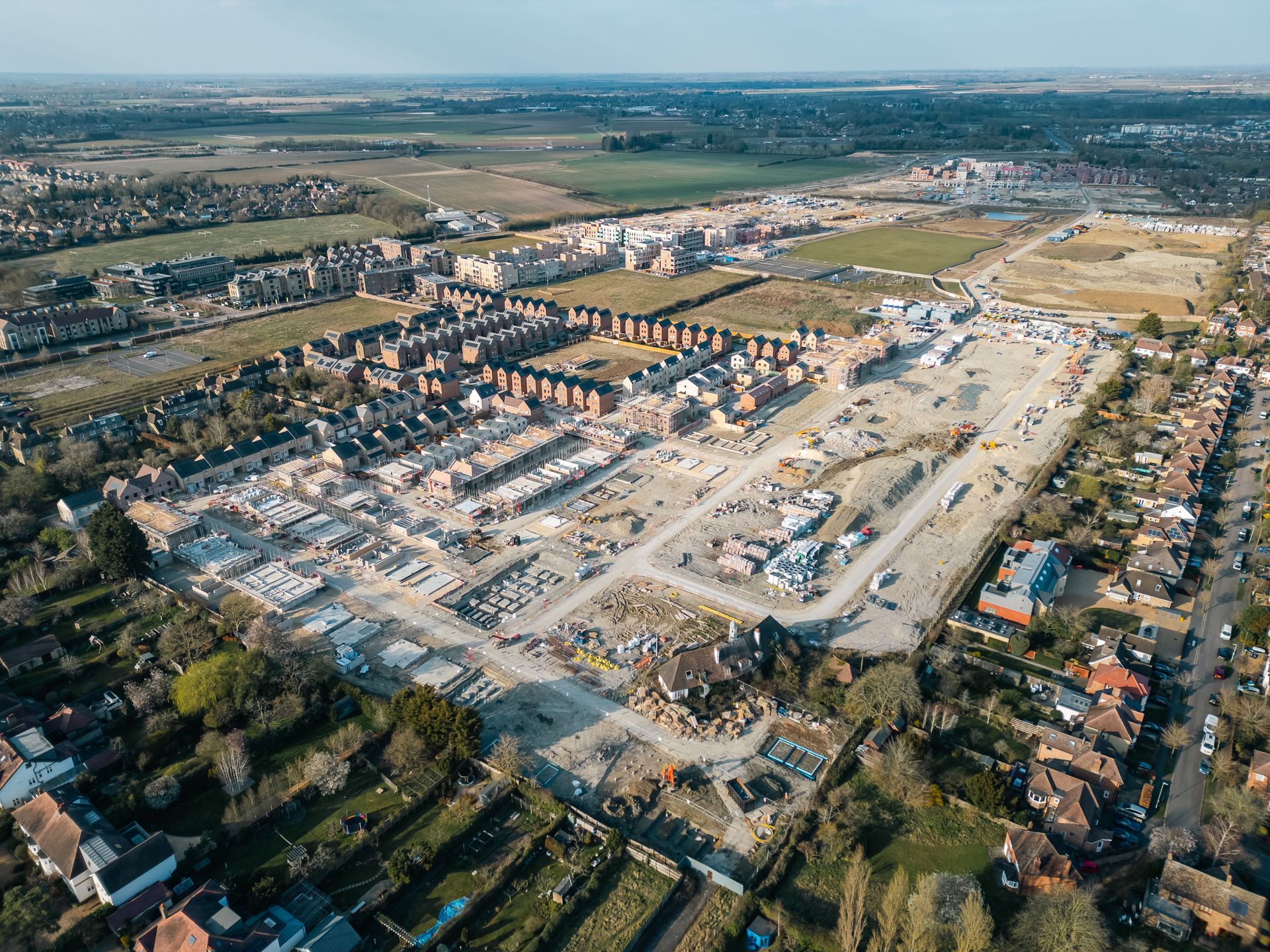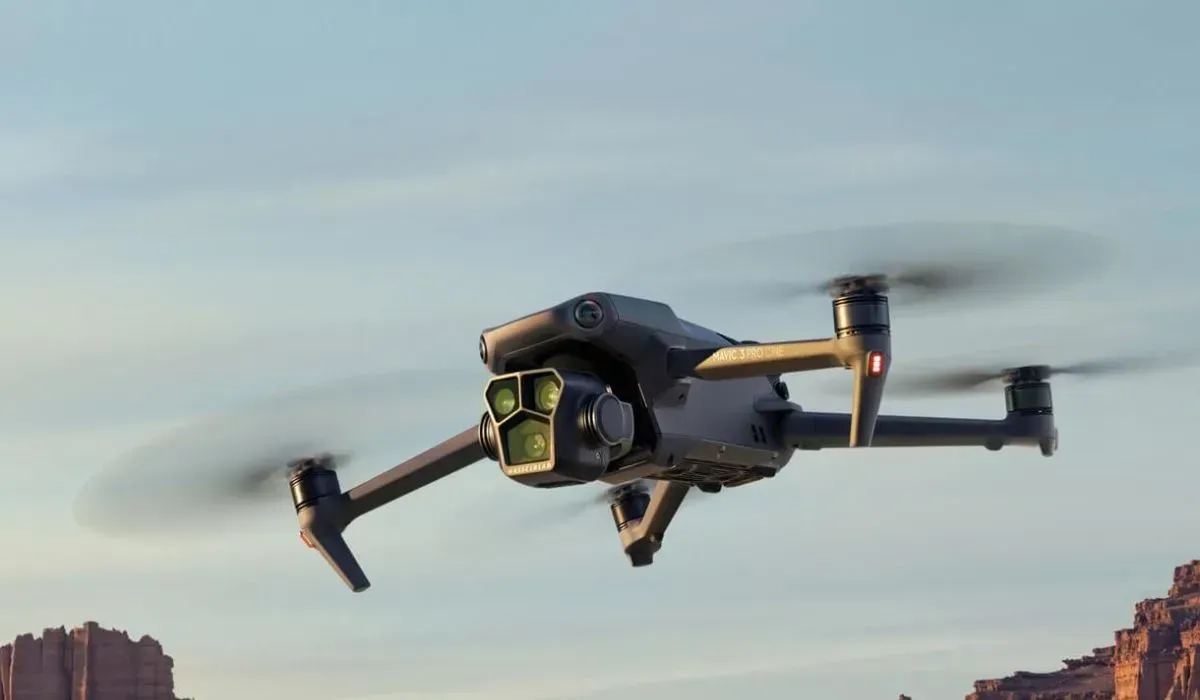Altitude Angel Enters Administration: Impact on UK Drone UTM and Operators
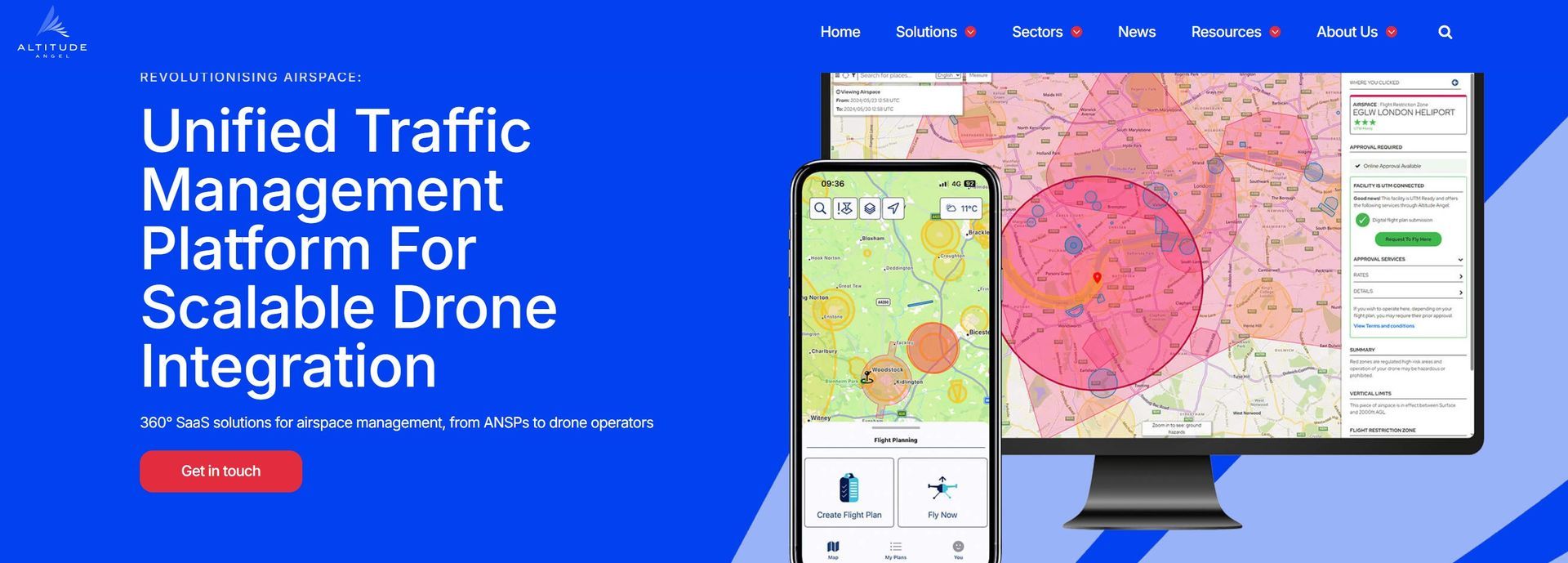
It’s unfortunate to learn that Altitude Angel has entered administration. The company played a pivotal role in the UK drone ecosystem, providing an accessible, centralised platform for UAS operators to review airspace restrictions and obtain digital flight authorisations within controlled zones.
On 7 October 2025, FRP Advisory were appointed as joint administrators, drawing a line under a decade in which Altitude Angel helped shape how uncrewed aviation is integrated with traditional air traffic services. For many commercial pilots and hobbyists alike, this creates immediate uncertainty about the availability of data and authorisation workflows they had come to rely on.
Founded in 2014 by Richard Parker and headquartered in Reading, Altitude Angel set out to deliver global-scale tools for safe, routine drone operations. Its mission evolved into a full
UTM stack that connected regulators,
ANSPs, airports, infrastructure owners and operators through a common digital backbone. The company’s messaging consistently emphasised compliance, safety and interoperability, and it backed that up with an expanding portfolio that served both enterprise infrastructure managers and day-to-day pilots, including resources for UK operators on
CAA drones guidance.
A statement on the Altitude Angel website on Tuesday 7th October 2025 confirmed the news
Two flagship technologies defined the brand. GuardianUTM offered a cloud platform for airspace and land access management, enabling quick approvals, auditable records, and a digital interface for both airspace managers and operators. ARROW provided wide-area surveillance and data fusion, designed to enable BVLOS flights by creating a shared picture of crewed and uncrewed traffic that could be consumed as a service. Together, these tools aimed to make authorisations faster for pilots, more defensible for asset owners, and more scalable for authorities that needed to supervise increasingly complex low-level airspace.
Altitude Angel also led some of the UK’s most visible UAS initiatives. Project Skyway proposed and then built out sections of a 165-mile drone corridor across England, intended to demonstrate routine BVLOS operations without segregating airspace.
The effort, delivered with partners such as BT and supported through the UK’s Future Flight Challenge, concluded pilots and demonstrations in early 2025 and showcased how “separation as a service” could unlock practical use cases, from inspections and logistics to emergency response. This program was more than a headline, it was a living laboratory that influenced standards conversations and public understanding of what modern UTM can deliver.
Crucially, Altitude Angel cultivated relationships with established aviation actors. Its strategic partnership with NATS Services signalled a maturing interface between ANSP-grade safety culture and digital UTM capabilities. For UK operators, that partnership promised a clearer pathway to integrated services, where digital approval, surveillance data, and procedural oversight would align with how controlled airspace is managed today. In Europe and beyond, collaborations with organisations like AirHub pointed to a model in which local mission-planning tools could plug into a common UTM fabric, improving compliance while reducing friction for day-to-day flying.
None of that means the company’s approach was without detractors. Pricing and charge points within approval workflows sometimes split opinion among airspace stakeholders, particularly where previously informal or manual processes were being digitised and monetised. Yet the alternative is not a zero-cost world, it is a patchwork of inconsistent rules, paper-based approvals and fragmented data, which tends to slow innovation and increase risk. The best lesson to take from Altitude Angel’s trajectory is that sustainable UTM requires clear public value, defensible safety cases, and economic models that work for both infrastructure providers and the operator community. That is a balancing act, and it becomes even harder when macroeconomic headwinds and regulatory complexity increase the cost of doing business across the sector.
What happens next matters for everyone who flies or depends on aerial data. Operators will want continuity for airspace data layers, NOTAM awareness, and digital authorisation portals that have become part of pre-flight routines. Airports, ports and landowners that adopted GuardianUTM workflows will look for a migration path that preserves their audit trail and policy configurations. Regulators and ANSPs face pressure to maintain confidence in BVLOS corridors, especially where trials like Skyway established momentum for real-world services. The industry should push for a managed transition that keeps essential datasets available, even if that means interim hosting or fast-tracked integrations with alternative UTM providers.
There are also reasons to be cautiously optimistic about the broader UTM landscape. The past two years saw increasing ANSP engagement, more rigorous demonstrations of detect-and-avoid services, and partnerships that pair mission planning with airspace services in a modular way. If those trends continue, the UK can still capitalise on the groundwork laid by Altitude Angel, provided the community prioritises interoperability, open standards, and continuity plans that prevent critical services dissolving when a single vendor falters. The NATS partnership model and European collaborations offer starting points for that conversation, since they already anticipate a federated ecosystem where different tools interoperate rather than compete as monoliths. For detect-and-avoid context, see the CAA’s guidance in CAP1861A.
Altitude Angel’s absence will be felt because it helped normalise what modern UTM can look like, turning abstract policy into usable tools. While its fee structure and growth bets invited debate, the company advanced the conversation in the UK from pilots and proofs to scalable services. If the community can preserve the momentum around digital authorisation, shared surveillance, and pragmatic BVLOS corridors, then the legacy of this chapter may still be progress, not retreat. The work now is to ensure continuity, learn from the economics, and double down on an interoperable ecosystem that outlives any single provider.
